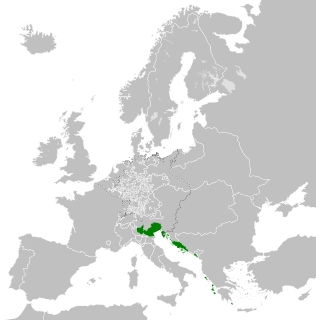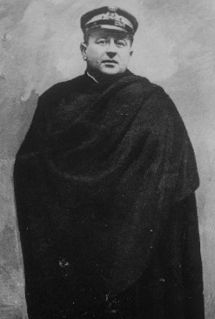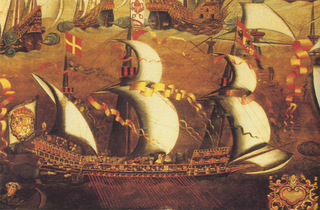
Marco Emilio Polo was a Venetian merchant, explorer, and writer who travelled through Asia along the Silk Road between 1271 and 1295. His travels are recorded in The Travels of Marco Polo, a book that described to Europeans the then mysterious culture and inner workings of the Eastern world, including the wealth and great size of the Mongol Empire and China in the Yuan Dynasty, giving their first comprehensive look into China, Persia, India, Japan and other Asian cities and countries.

Venice is a city in northeastern Italy and the capital of the Veneto region. It is built on a group of 118 small islands that are separated by canals and linked by over 400 bridges. The islands are in the shallow Venetian Lagoon, an enclosed bay lying between the mouths of the Po and the Piave rivers. In 2020, 258,685 people resided in the Comune di Venezia, of whom around 55,000 live in the historical city of Venice. Together with Padua and Treviso, the city is included in the Padua-Treviso-Venice Metropolitan Area (PATREVE), which is considered a statistical metropolitan area, with a total population of 2.6 million.

The Merchant of Venice is a 16th-century play written by William Shakespeare in which a merchant in Venice named Antonio defaults on a large loan provided by a Jewish moneylender, Shylock. It is believed to have been written between 1596 and 1599.

The Republic of Venice or Venetian Republic, traditionally known as La Serenissima, was a sovereign state and maritime republic in parts of present-day Italy which existed for 1100 years from 697 AD until 1797 AD. Centered on the lagoon communities of the prosperous city of Venice, it incorporated numerous overseas possessions in modern Croatia, Slovenia, Montenegro, Greece, Albania and Cyprus. The republic grew into a trading power during the Middle Ages and strengthened this position in the Renaissance. Citizens spoke the still-surviving Venetian language, although publishing in (Florentine) Italian became the norm during the Renaissance.

The Grand Canal is a channel in Venice, Italy. It forms one of the major water-traffic corridors in the city.

The Venetian Arsenal is a complex of former shipyards and armories clustered together in the city of Venice in northern Italy. Owned by the state, the Arsenal was responsible for the bulk of the Venetian republic's naval power from the late Middle Ages to the early modern period. It was "one of the earliest large-scale industrial enterprises in history".

The Italian Navy is the navy of the Italian Republic. It is one of the four branches of Italian Armed Forces and was formed in 1946 from what remained of the Regia Marina after World War II. As of August 2014, the Italian Navy had a strength of 30,923 active personnel, with approximately 184 vessels in service, including minor auxiliary vessels. It is considered a multiregional and a blue-water navy.

MSC Opera is a cruise ship built in 2004, carrying 2,679 passengers in 1,071 cabins, and with a crew complement of approximately 728, currently operated by Swiss company MSC Cruises. She served as the flagship of the company until MSC Musica entered service in 2006.

Nazario Sauro was an Austrian-born Italian irredentist and sailor.

The maritime republics, also called merchant republics, of the Mediterranean Basin were thalassocratic city-states in Italy during the Middle Ages. Most know them as Venice, Genoa, Pisa and Amalfi; less known, are Ragusa, Gaeta, Ancona, and Noli.

Galleasses were military ships developed from large merchant galleys, and intended to combine galley speed with the sea-worthiness and artillery of a galleon. While perhaps never quite matching up to their full expectations, galleasses nevertheless remained significant elements in the early modern naval armoury for some considerable time.

The Italian auxiliary cruiser Ramb II was a pre-war banana boat built at Monfalcone by the CRDA in 1937. She briefly served as an auxiliary cruiser with Regia Marina early in World War II before becoming an auxiliary transport with the Imperial Japanese Navy later in her career.

Antonio is the title character in Shakespeare's The Merchant of Venice. An influential, powerful, and wealthy nobleman of Venice, he is a middle-aged man and a merchant by trade who has his financial interests tied up in overseas shipments when the play begins. He is kind, generous, and honest to Christians, and is loved and revered by all the Christians who know him, but not by the Jew Shylock, whom he himself scorns.

The Merchant of Venice is a 1923 German silent drama film directed by Peter Paul Felner and starring Werner Krauss, Henny Porten and Harry Liedtke. The film is an adaptation of William Shakespeare's play The Merchant of Venice. It was released in the United States in 1926 as The Jew of Mestri. The film was made on location in Venice, with scenes and characters added which were not in the original play. This is the surviving copy, being two reels shorter than the German version. The characters in the German retained Shakespeare's nomenclature, but in the American they were given new names sourced from the Italian work Il Pecorone, a 14th-century short story collection attributed to Giovanni Fiorentino, from which Shakespeare is believed to have drawn his idea. The film purports to be a return to the original, as an excuse for its differences from the play.

The Republic of Ancona was a medieval commune and maritime republic notable for its economic development and maritime trade, particularly with the Byzantine Empire and Eastern Mediterranean, although somewhat confined by Venetian supremacy on the sea. It enjoyed excellent relations with the Kingdom of Hungary, was an ally of the Republic of Ragusa, and maintained good relations with the Turks. All these relationships enabled it to serve as central Italy's gateway to the Orient.

The Venetian navy was the navy of the Venetian Republic which played an important role in the history of the republic and the Mediterranean world. It was the premier navy in the Mediterranean Sea for many centuries between the medieval and early modern periods, providing Venice with control and influence over trade and politics far in excess of the republic's size and population. It was one of the first navies to mount gunpowder weapons aboard ships, and through an organised system of naval dockyards, armouries and chandlers was able to continually keep ships at sea and rapidly replace losses. The Venetian Arsenal was one of the greatest concentrations of industrial capacity prior to the Industrial Revolution and responsible for the bulk of the republic's naval power.

The Battle of Trapani took place on 23 June 1266 off Trapani, Sicily, between the fleets of the Republic of Genoa and the Republic of Venice, as part of the War of Saint Sabas (1256–1270). During the war, the Venetians held the upper hand in naval confrontations, forcing the Genoese to resort to commerce raiding and avoid fleet battles. In the 1266 campaign, the Genoese had an advantage in numbers, but this was not known to the Genoese commander, Lanfranco Borbonino. As a result, the Genoese tarried at Corsica until the end of May. The Venetian fleet under Jacopo Dondulo, was left to sail back and forth awaiting the appearance of the Genoese fleet in the waters around southern Italy and Sicily. Fearing that the other side had more ships, both sides reinforced their fleets with additional ships, but the Genoese retained a small numerical advantage.

The Battle of Saseno took place on 14 August 1264 near Saseno island off the coast of Albania, between a fleet of the Republic of Genoa and a trade convoy of the Republic of Venice, during the War of Saint Sabas. So far in the war, the Genoese had experienced only defeats in direct confrontations with the Venetian navy, and had therefore resorted to raiding the Venetian commerce convoys to the Levant, which were critical to the Venetian economy.

Il Pecorone is an Italian novela written between 1378 and 1385 by Giovanni Fiorentino. It was written in a style influenced by the Decameron of Giovanni Boccaccio, the Golden Legend collection of saint lives, the Seven Sages of Rome or the Gemma ecclesiastica of Giraldus Cambrensis. For its historical facts, however, it relies on the Nuova Cronica of Giovanni Villani.

A period of Albanian piracy occurred from the 15th to the 19th centuries, during which Albanian pirates plundered and raided ships. These pirates were based mainly in Ulcinj, but were also found in Bar and Ragusa, and had connections with North Africa.




















